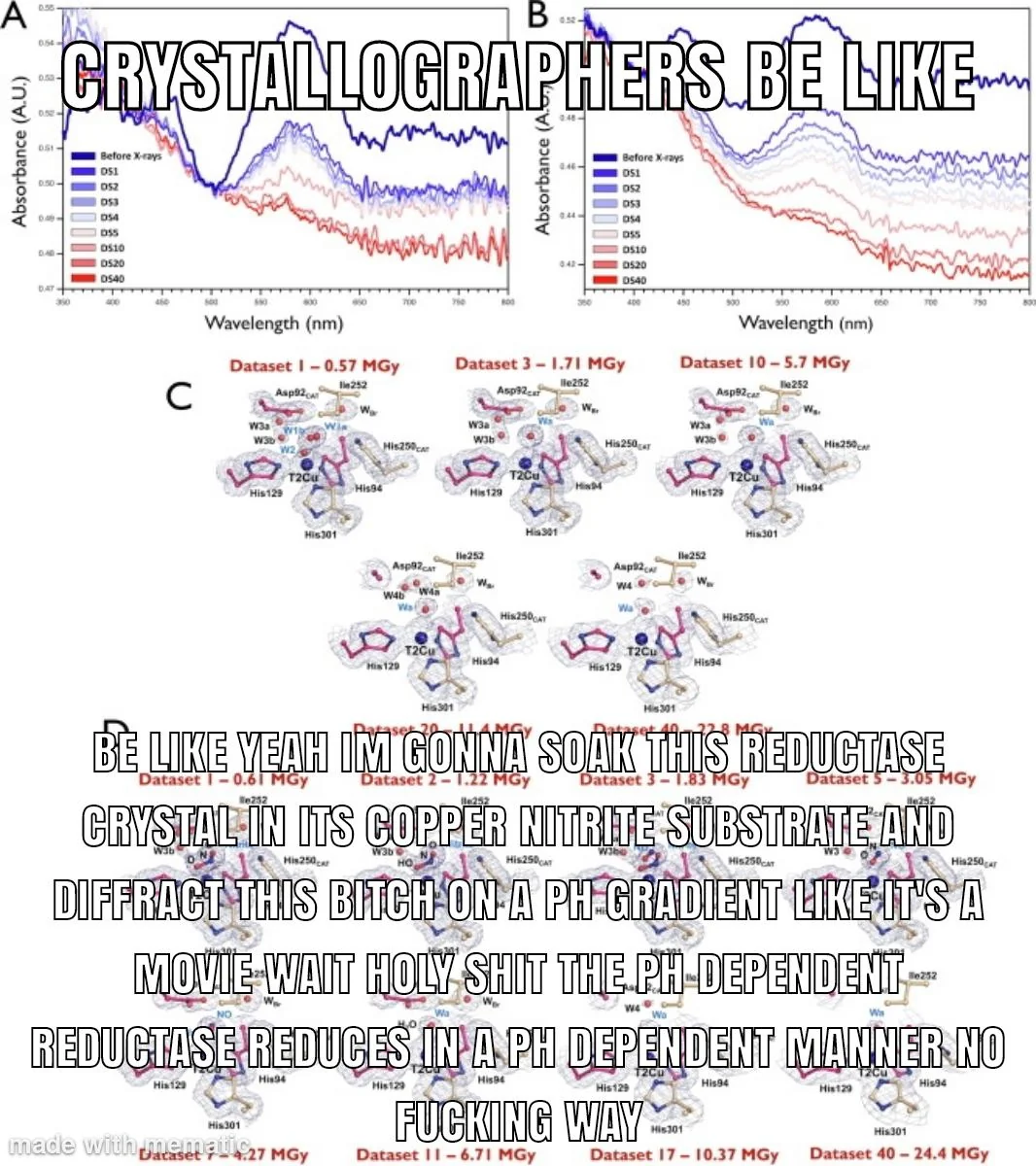this post was submitted on 22 Oct 2024
47 points (98.0% liked)
Science Memes
11130 readers
2867 users here now
Welcome to c/science_memes @ Mander.xyz!
A place for majestic STEMLORD peacocking, as well as memes about the realities of working in a lab.

Rules
- Don't throw mud. Behave like an intellectual and remember the human.
- Keep it rooted (on topic).
- No spam.
- Infographics welcome, get schooled.
This is a science community. We use the Dawkins definition of meme.
Research Committee
Other Mander Communities
Science and Research
Biology and Life Sciences
- !abiogenesis@mander.xyz
- !animal-behavior@mander.xyz
- !anthropology@mander.xyz
- !arachnology@mander.xyz
- !balconygardening@slrpnk.net
- !biodiversity@mander.xyz
- !biology@mander.xyz
- !biophysics@mander.xyz
- !botany@mander.xyz
- !ecology@mander.xyz
- !entomology@mander.xyz
- !fermentation@mander.xyz
- !herpetology@mander.xyz
- !houseplants@mander.xyz
- !medicine@mander.xyz
- !microscopy@mander.xyz
- !mycology@mander.xyz
- !nudibranchs@mander.xyz
- !nutrition@mander.xyz
- !palaeoecology@mander.xyz
- !palaeontology@mander.xyz
- !photosynthesis@mander.xyz
- !plantid@mander.xyz
- !plants@mander.xyz
- !reptiles and amphibians@mander.xyz
Physical Sciences
- !astronomy@mander.xyz
- !chemistry@mander.xyz
- !earthscience@mander.xyz
- !geography@mander.xyz
- !geospatial@mander.xyz
- !nuclear@mander.xyz
- !physics@mander.xyz
- !quantum-computing@mander.xyz
- !spectroscopy@mander.xyz
Humanities and Social Sciences
Practical and Applied Sciences
- !exercise-and sports-science@mander.xyz
- !gardening@mander.xyz
- !self sufficiency@mander.xyz
- !soilscience@slrpnk.net
- !terrariums@mander.xyz
- !timelapse@mander.xyz
Memes
Miscellaneous
founded 2 years ago
MODERATORS
you are viewing a single comment's thread
view the rest of the comments
view the rest of the comments

Here is my try at explaining it in layman terms, but I'm not 100% sure I got the meme completely right. I didn't do protein crystallography, only organometallics.
Crystallography is the dark magic art of turning nice really small crystals into pictures of molecules (or more precisely: 3D maps of electron density) The scientist in the meme wanted to measure the same protein, but under different pH conditions, so either adding some acid or some base while the crystals form. Then they hopefully get different structures at different pH values and can make a nice video animation like a flipbook to show the change in structure.
And I think the meme makes fun of the fact that the scientist did this experiment with a certain expectation and then that expectation happens but the scientist is surprised by it happening.
They chose a protein which is a reductase, meaning it can reduce the oxidation state of certain molecules. Such a reduction reaction is often dependant on pH value in organism (I think), therefore changing the pH value changes what the protein will do in the crystallization solution.
Computational protein engineer here. Pretty good explanation. I wanted to add that just because we know that a protein's behavior changes depending on pH, it is still interesting to see what atom-level changes to the 3D structure are caused by the pH shift (e.g. so that we can better predict those changes on other proteins).
Thanks for the confirmation!
That was my source of confusion: finding out, how stuff works exactly is science. Even if we know the rough principle, the details might reveal some new things.